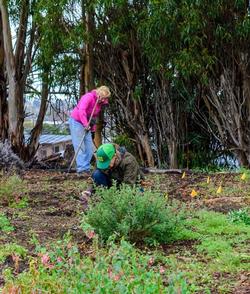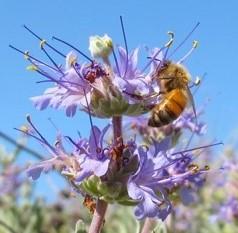The Latest Dirt - March 2023
If You Plant It, They Will Come
By Liz Rottger

It was a late afternoon in early April 2022 when I arrived at Pacific Oaks Community Garden to pick up the garden’s key. UC Master Gardeners finally had a formal agreement with the community garden to take over its operations. The garden was a chain-linked fence enclosure of a steep, grass-covered hillside with a very large vacant flat area. A small community garden had struggled for several years to gain a toehold in this space without success. There were two formal, weed-choked raised beds, along with several other areas that had once been cultivated, but were now mostly covered in either wild oat grass or Oxalis. As I walked across the lot, the only sound I heard was the late afternoon wind blowing in from the Bay. It was a beautiful setting, but essentially dead.

So among the very first projects we undertook at the new UC Master Gardener Water Conservation Garden was to plant a pollinator garden to reestablish a connection with the surrounding nature. We planted predominately California natives—a large variety of clarkias, sages, milkweeds, asters, Monkey flowers, penstemons, lupins, yarrows, yampas, buckwheat and seaside daisies. I don’t think we realized how easy it was to restore a little nature to such a barren wasteland. But as soon as our plants began to flower a few weeks later, lots of bees, insects, butterflies and hummingbirds suddenly found their way to our pollinator garden. I’m not sure how that happens, but it does. It was very beautiful and quite remarkable! It demonstrated how close nature really is, even when we think it has been lost. By restoring and protecting habitats, we can promote species diversity and local ecosystems.
